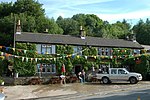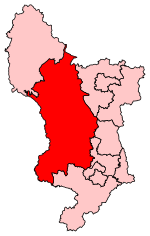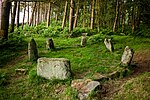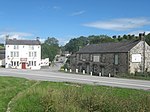Winster Market House
Derbyshire geography stubsMarket housesNational Trust properties in DerbyshireTourist attractions in Derbyshire

Winster Market House is a building dating from the end of the 17th or beginning of the 18th centuries, and is situated in Winster, near Matlock, Derbyshire, England. The house has been in the ownership of the National Trust since 1906. It was the Trust's first acquisition in the Peak District. Winster Market House dates back to the time when cheese and cattle fairs featured prominently in the daily life of the area.
Excerpt from the Wikipedia article Winster Market House (License: CC BY-SA 3.0, Authors, Images).Winster Market House
Main Street, Derbyshire Dales
Geographical coordinates (GPS) Address Website Nearby Places Show on map
Geographical coordinates (GPS)
| Latitude | Longitude |
|---|---|
| N 53.1416 ° | E -1.6402 ° |
Address
Winster Market House
Main Street
DE4 2DN Derbyshire Dales
England, United Kingdom
Open on Google Maps










